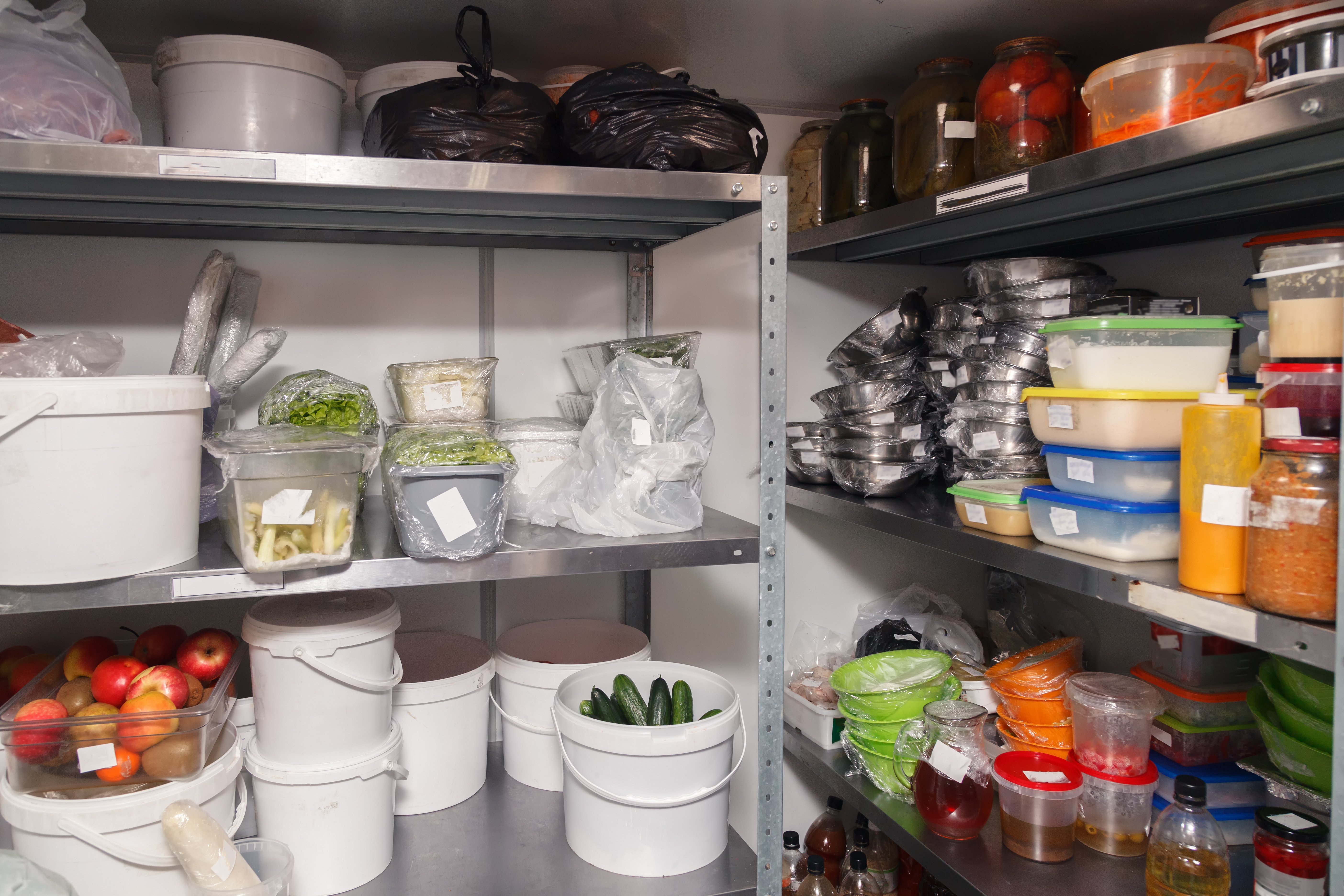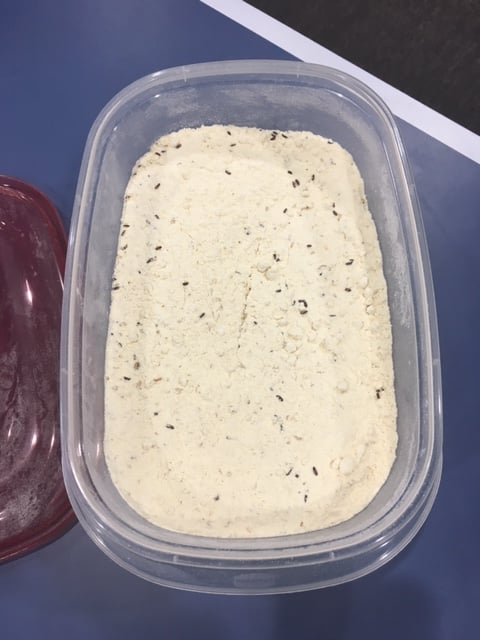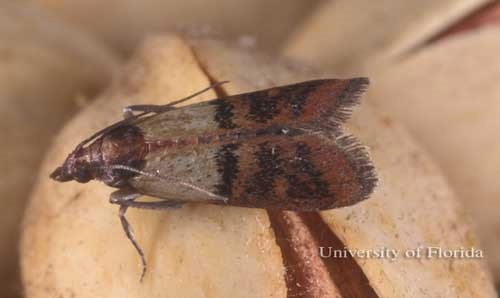Many food products stored in restaurants can easily attract a variety of pests, year-round. Grain pests like moths, beetles, and weevils, among others, can be a real problem for foodservice facilities. Even the cleanliest restaurants can be vulnerable to pests that enter through shipments and deliveries. Once these insects get indoors, they can hide in shelving, cupboards, cabinets, panties, and in the worst case, within food. Restaurant pest control is highly specialized and can be tricky to resolve without professional pest management.

How can grain pests impact my restaurant?
The impacts of grain pest invasions in your restaurant can cause more than just stress. Consider the following possible results of a grain pest infestation.
- Infestations, even of a single pest, can have multiple sources. This causes control to be especially challenging to combat.
- These pests, which breed inside food products and can leave behind eggs and larvae, as well as exoskeletons and other body parts, create unsanitary conditions and contaminate food items. Once the infestation reaches a certain size, these pests will move outside of the product.
- Grain pests aren’t picky. They are drawn to various types of food commonly found in restaurant storage including whole grains, wheat, corn, barley, rice, beans, nuts, powdered mixes, flour, and more.
- Trying to deal with a grain pest infestation that isn’t promptly taken care of can put stress on your employees. If your workers break open an infested container, productivity can be decreased when they must spend time discarding the contents, cleaning up the mess, locating uncontaminated product to use and replacing the spoiled food.
- Health code violations and failed inspections are the most obvious and detrimental consequence of grain pest infestations.
- Pests that make their way into dining rooms can instantly trigger negative customer reviews and complaints. This can quickly hurt your bottom line.
What kinds of pests contaminate restaurant food?
As a restaurant owner, knowing the pests that could infest your business is crucial. While grain pests can vary according to the food source, your area and conditions found in your restaurant can influence the activity levels of different species.
Common grain pests in New Jersey and Eastern Pennsylvania include:
Saw-Toothed Grain Beetles
1. These pests are commonly found infesting processed grain, oats, pet foods and seeds. They also attack rice, cereals, dried fruits, breakfast foods, chocolate, and pastas.
2. Saw-toothed grain beetles are brown and about 1/10th inch in length.
3. Unlike many varieties of beetle, saw-toothed grain beetles cannot fly.
4. They breed and multiply quickly, causing infestations to get out of hand quickly. A single female saw-toothed grain beetle may produce up to 285 eggs that are deposited into food products within your restaurant.
5. Because of the speed at while saw-toothed grain beetles can reproduce, food sources quickly become crowded. In search of food, these beetles may infest additional nearby food products, spreading the infestation even further. This is how your merchandise can be contaminated on a large scale.
Rice Weevils
1. Rice weevils typically infest food such as popcorn, barley, corn, beans, rice, seeds, dried corn décor, uncooked pasta, and other whole grains. This can include many products stored in your restaurant.
2. They are small, reddish-brown in color, and appear to have a hard exterior. You probably won’t even see rice weevils unless you open an infested container, only to find them crawling within the food.
3. Although pests should never be handled directly out of general caution, rice weevils have not been known to bite, sting, or transmit disease.
4. Rice weevils make their way into restaurants via already infested food sources such as grain storage silos and production plants.

Pictured Above: Confused flour beetles infesting dry pancake mix in a cracked plastic container
Red Flour Beetles and Confused Flour Beetles
1. Similar in biology and habits, the red flour beetle flies but the confused flour beetle does not.
2. They are both about 1/8th of an inch long and reddish-brown.
3. In heated buildings, both can breed year-round.
4. The red flour beetle is often found in southern states and the confused flour beetle is usually found in northern states, including New Jersey and Pennsylvania, but it's possible to see them outside of their usual habitat in any state.
5. Females eventually lay around 300 to 400 eggs. Adult beetles can live up to three years or longer.
6. Heavily infested flour and other processed foods often have a grayish tint.

Pictured Above: Indian meal moth Photo Credit: University of Florida
Indian Meal Moths
1. They are less than 1 inch in length, with brownish-red or gray coloring.
2. Indian meal moths spin silk on the bottom of food packaging. Webbing can be found inside the packaging as well. Food can become discolored with heavy Indian meal moth activity.
3. These moths can infest flour, nuts, chocolate, seeds, beans, biscuits, dried fruits and many other types of stored foods.

How can I avoid grain pest infestations in my restaurant?
Avoiding grain pest infestations in your restaurant is paramount to the success of the business. Try using the following tips to stop grain pests before they become a problem.
- Transfer all dried food goods into glass or plastic containers with air-tight lids to stop pests from getting in and to help contain any infestations that do occur.
- Make a habit of consistently inspecting food deliveries for signs of pest infestations. If deliveries look as though they have been infested or tampered with by pests, then refuse delivery or send them back.
- If dried goods can be stored in the refrigerator, do so to curb infestations.
- Use older food products prior to opening newer purchases. Large quantity or bulk products are more likely to be infested the longer they are stored.
- Discard infested foods in outdoor trash containers.
Cooper Pest Solutions can protect your restaurant against pests and wildlife. As a restaurant owner, you don’t have time to deal with infestations. Grain pests, and other insects common to restaurants such as cockroaches and ants, can be eliminated and prevented with professional pest control services. Protect your hard-earned reputation and bottom line by trusting Cooper Pest Solutions with specialized restaurant pest control plans. Call us or fill out the contact form on this page to set up a free, no-obligation consultation.

